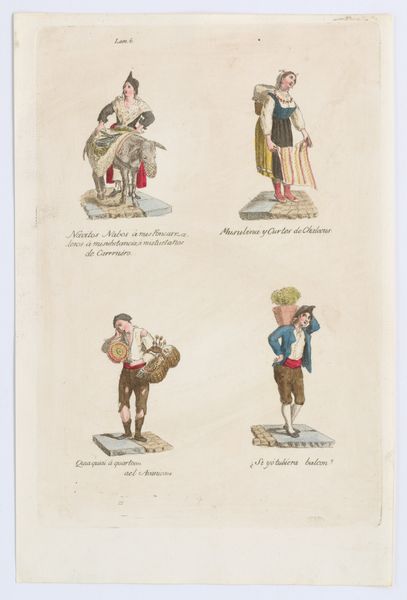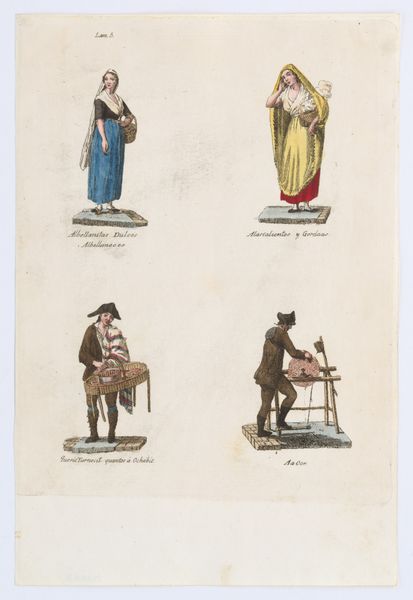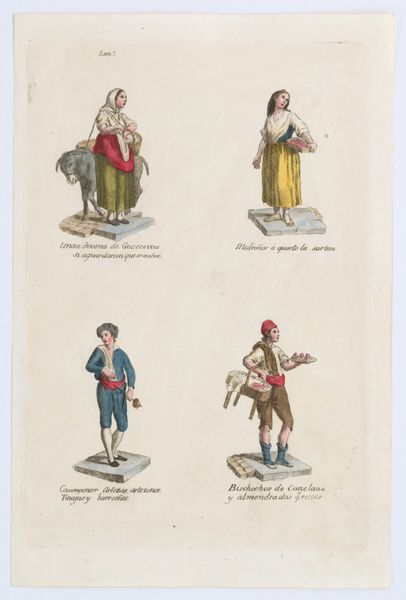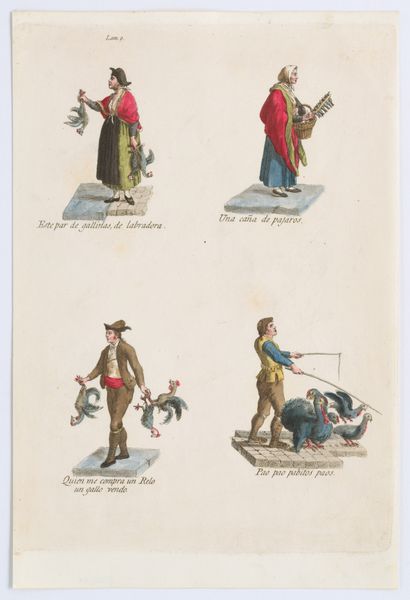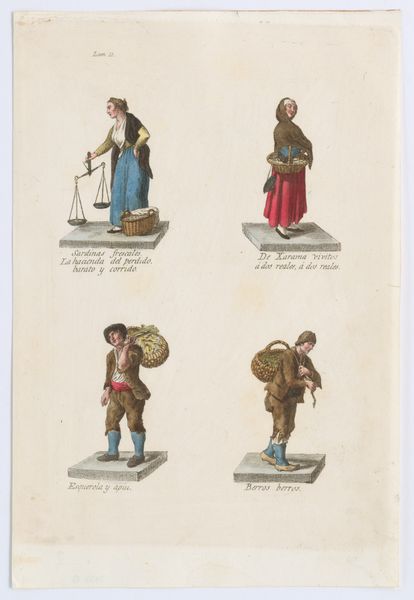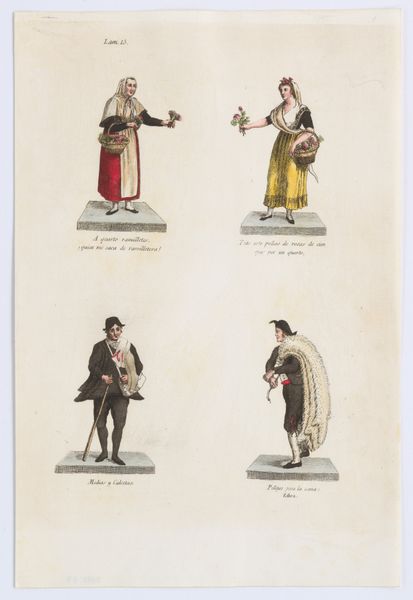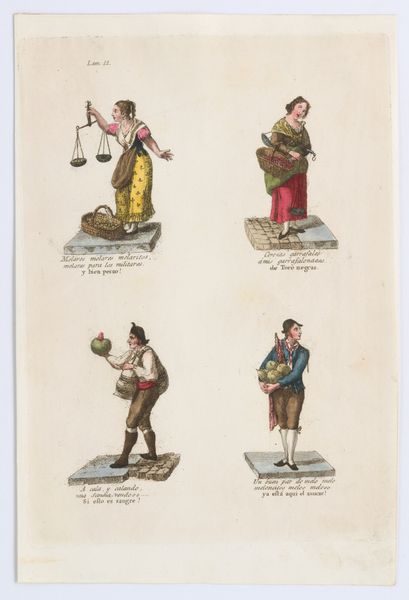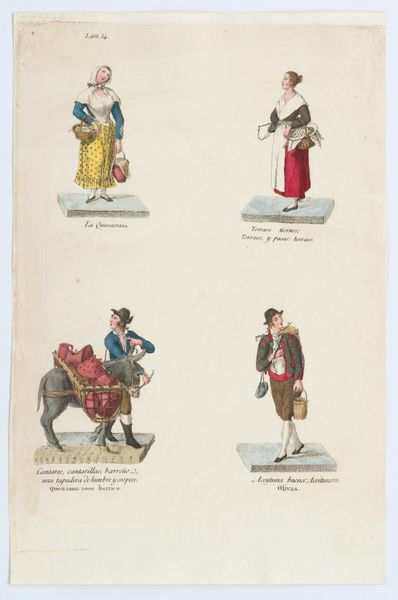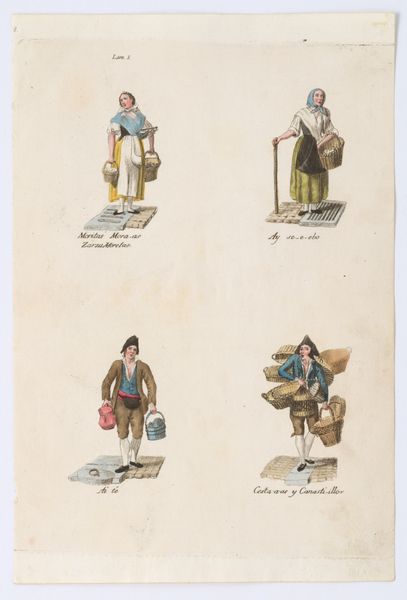
Plate 4: four street vendors from Madrid selling Albillas, radishes, carbon, from 'Los Gritos de Madrid' (The Cries of Madrid) 1809 - 1817
0:00
0:00
drawing, coloured-pencil, print, watercolor
#
portrait
#
drawing
#
coloured-pencil
# print
#
caricature
#
watercolor
#
coloured pencil
#
romanticism
#
genre-painting
#
history-painting
Dimensions: Sheet: 11 13/16 × 7 7/8 in. (30 × 20 cm)
Copyright: Public Domain
Editor: This is "Plate 4: four street vendors from Madrid selling Albillas, radishes, carbon, from 'Los Gritos de Madrid'," created between 1809 and 1817, possibly by Miguel Gamborino. The figures seem so deliberately placed, almost staged, with an attention to their social class. What do you see in this piece? Curator: I see a fascinating snapshot of early 19th-century Madrid, less as a neutral observation and more as a commentary on social stratification. Note how each figure is isolated on a small platform, suggesting their individual economic roles and limited mobility within the social hierarchy. Who benefits, and who is being exploited within this market structure? Editor: So, you're saying it's less about romanticizing street vendors and more about questioning their place in society? Curator: Exactly! Consider the context: Spain was undergoing immense political upheaval at this time. This image then, while seemingly simple, presents us with the intersectional elements of labor, class, and survival under a shifting imperial power. Even the 'cries' themselves become a form of protest. Editor: I see. It’s like each figure embodies a specific hardship. The raggedy urchin contrasts sharply with the man leading the donkey laden with carbon. Is it a deliberate visual language highlighting income disparity? Curator: Precisely! The artist seems to use caricature to draw attention to these stark inequalities. But are they challenging or reinforcing these hierarchies? Who is the audience for this work, and what biases do they bring? Editor: It’s almost as if they are frozen in their roles, yet there's something almost rebellious in the way they’re being depicted. Thank you, this really offers a new way to consider the power dynamics within the artwork. Curator: Indeed. It's a powerful reminder of how art can act as a historical document while simultaneously critiquing social structures, sparking necessary dialogue and understanding.
Comments
No comments
Be the first to comment and join the conversation on the ultimate creative platform.

